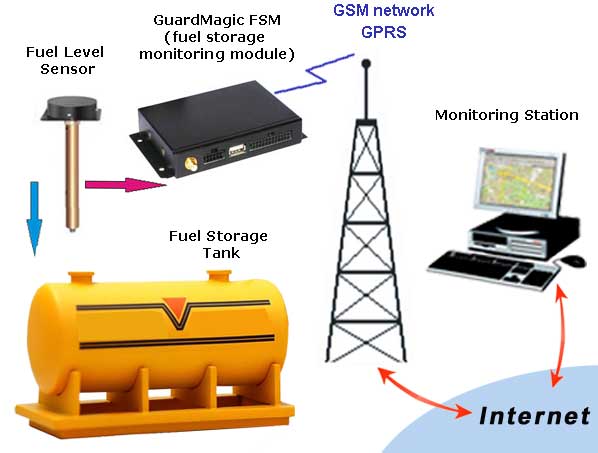The importance of accountability is growing in all areas of business management. As a fleet operations manager, embracing an advanced, wireless sensor based fuel monitoring system can help you address this need in an efficient and cost-effective manner. A reliable wireless fuel level monitoring system can provide detailed alerts and reports on fueling phases, fuel filling locations, times, filled and consumed fuel amounts, and more.
Explore the key features and benefits of relying on advanced real-time wireless fuel level sensor based monitoring systems.
Key Features of Wireless Fuel Level Sensor
Some of the main features that enable modern wireless fuel level sensors to redefine real-time fuel monitoring are as follows:
Ease of Installation
Wireless real-time monitoring fuel sensors do not require wiring. Laying cables has been a time-consuming and effort-intensive task with traditional sensors. These modern sensors also help save costs in laying wires throughout your vehicle.
Long-Lasting Battery
Modern fuel level sensors are powered by powerful Lithium-thionyl chloride batteries that can deliver up to 7 years of continuous power supply. Besides the wireless sensors use Bluetooth 4.0 which consumes minuscule energy. This unique combination of high power availability and low power consumption helps these sensors operate consistently for years without requiring battery replacement.
Foolproof Protection
Modern fuel level sensors are protected by impact-resistant polyamide casing that offers an additional level of protection against tampering, physical impact, shocks, and a multitude of other external factors. Such casing offers high endurance against a wide range of mechanical damages whether the sensor is installed in a vehicle, stationary tank, container, or equipment.
Such fuel level sensors are further protected against:
- Voltage surge
- Polarity inversion
- Electromagnetic interference
The sensor’s housing provides IP69 protection against dust and moisture, offering you complete peace of mind.
Compatibility with Key Tracking Technologies
Reliable and consistent connectivity is an important aspect for any real-time, wireless fuel monitoring system to work effectively. Latest fuel level sensors are compatible with the following brands of GPS and GLONASS trackers:
- Teltonika
- Galileosky
- GlonassSoft
- Navtelecom
- Fort Telecom
- Neomatica
- Vega-Absolute
- Glomos
- Queclink
They also have connectivity with various satellite navigation systems with the help of the RS-485 LLS interface.
Enabling Real-Time Monitoring
Whether you require a fuel monitoring system for trucks or other fleet or logistics automobiles, real-time monitoring and alerts can make a world of difference in your operations. Such a system provides you with real-time data on fuel usage and fleet performance.
When you use such a wireless fuel level sensing-based system for trucks, you can monitor fuel levels, rate of fuel consumption, and likely inefficiencies. Such a level of visibility allows you to immediately identify any wrongdoing, deviations, or irregularities in fuel management.
Instant alerts allow you to detect any unusual activities. These activities can also include sudden changes in fuel levels or fuel consumption patterns. Such instant notifications allow you to take immediate action and minimize potential losses or wastage.
When you gain a comprehensive overview of fuel-based metrics across your fleet, you can follow better-informed fleet management practices. This enables you to operate your fleet at its optimal efficiency, as you can quickly address or resolve any irregularities. Thus, such a wireless sensor-based fuel level monitoring system enables proactive fleet management, protecting assets, and maintaining operational efficiency.
Data-Based Fleet Management Decisions
A wireless fuel level monitoring system also facilitates data-based fleet management. These sensors play an important role in gathering a wide range of data that can be analyzed to make well-informed decisions.
This data helps you better understand how fuel is being used for each vehicle and the areas where you can make improvements. The key areas that can be improved with the help of such data include:
- Cost reduction
- Driving behavior
- Route optimization
Conclusion
Thus, there are many ways that a wireless sensor-based fuel monitoring system can empower your business to make informed fleet management decisions. Such a system brings all the relevant data to your fingertips. Real-time monitoring can help you experience total control over your fleet’s fuel management. All these benefits translate into time and cost savings, making your operations more profitable and cost-effective.


